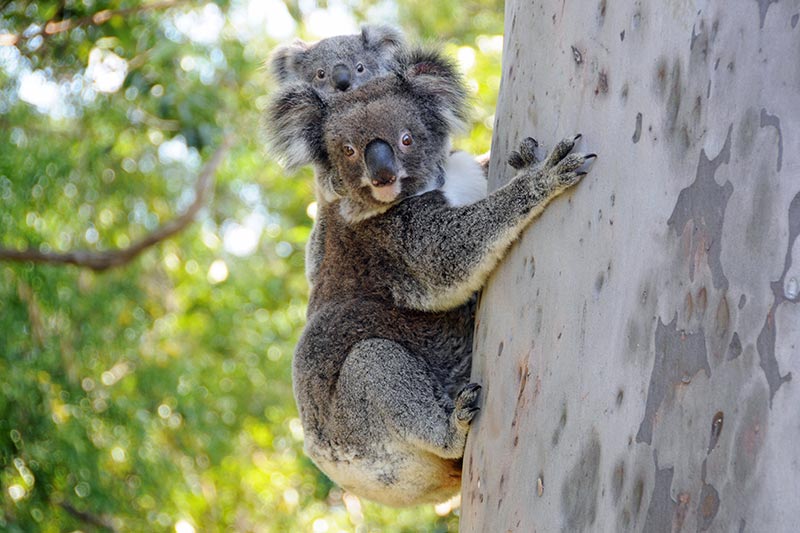We provide a comprehensive suite of services for arborist reports and flora and fauna assessments. Our integrated approach allows for cost-effective solutions as there is overlap between the two reports. Our arborists and ecologists work collaboratively to produce both reports, ensuring a streamlined and efficient process for our clients.
A Flora and Fauna Assessment Report (FFA) is a specialised consultant report often required as part of a Development Application (DA). It identifies native vegetation communities, threatened species, and associated habitats on a property and evaluates the potential impacts of a proposed development on these ecological features. The assessment may also include a Test of Significance (5-part Test) to determine if the development could significantly affect threatened species, ecological communities, or their habitats.
These reports, though named differently, serve the same purpose as a Flora and Fauna Report. They all assess the potential impacts of your proposed DA on flora, fauna, and biodiversity listed as 'threatened' under the New South Wales Biodiversity Conservation Act 2016 (formerly the NSW Threatened Species Conservation Act 1995).
The requirement for a Flora and Fauna Report arises from the NSW Environmental Planning and Assessment Act 1979 (EP&A Act), which mandates that Councils consider in detail the impact of a development on native vegetation, threatened species, populations, or communities. This involves an impact assessment, often referred to as the 'Five-part Test of Significance' or '5 Part Test,' in accordance with the NSW Biodiversity Conservation Act 2016 (BC Act). You may need a Flora and Fauna Report for DAs involving demolition, construction, tree removal, subdivision, or dam removal.
To determine if your proposed DA requires a Flora and Fauna Report, contact your local council's planning department or email us on info@arbor-express.com.au. Many councils have guidelines for these reports in their Development Control Plans (DCP) and typically require licensed and qualified Ecological Consultants, such as Arbor Express, to prepare them.
Councils usually require a qualified individual to prepare the report, including:
All of Arbor Express Ecologists staff meet these criteria and are fully qualified to conduct Flora and Fauna Assessment Reports in New South Wales.
A Vegetation Management Plan (VMP) is a document that addresses the ongoing management requirements of native vegetation, including trees, shrubs, and ground cover, within a proposed development site.
Many Sydney Councils and numerous Regional NSW Councils require developers to submit a VMP as part of the Development Application (DA) process. Property subdivisions, building construction, extensions, and rezoning typically necessitate a VMP, especially if the development is in proximity to natural drainage lines. It's important to note that preparing a VMP is a legal obligation under the NSW Water Management Act 2000.
A VMP is sometimes referred to by other names, including Biodiversity Management Plans, Bushland Management Plans, Conservation Management Plans, or Vegetation Rehabilitation Plans.
The NSW Department of Water requires a VMP from individuals undertaking controlled activities such as development, construction, or earthworks on "waterfront land". This definition includes not only ocean-view properties but any properties close to natural water bodies, such as lakes, rivers, or mapped drainage lines. Preparing a VMP remains a legal obligation under the NSW Water Management Act 2000.
A Biodiversity Development Assessment Report (BDAR) is an official document that outlines how a developer or their representative intends to address and mitigate the impacts of a proposed development on native vegetation and biodiversity as per the New South Wales Biodiversity Conservation Act 2016 and the Biodiversity Regulation 2017.
When a proponent is undergoing a development application (DA) or state significant development (SSD) under Part 4 of the Environmental Planning and Assessment Act 1979, they may need to engage an Accredited Biodiversity Assessor, such as an Ecologist from Arbor Express, to prepare a BDAR. This report identifies strategies to avoid, minimise, and offset the potential impacts on native vegetation and biodiversity.
The Biodiversity Offsets Scheme (BOS) Entry Test (BOSET) is employed to determine the necessity of engaging an Accredited Assessor Ecologist Consultant for applying the Biodiversity Assessment Method (BAM) to assess proposal impacts. This applies to local developments submitted to councils and clearing activities in urban and environmentally designated areas (under the State Environmental Planning Policy (Vegetation in Non-Rural Areas) 2017) that do not require development consent.
For developments falling under Part 4 of the Environmental Planning and Assessment Act 1979, and SSDs, the Biodiversity Conservation Regulation 2017 establishes threshold levels triggering the Biodiversity Offsets Scheme. These thresholds consider the area of native vegetation impacted or whether the impacts occur on an area mapped by the Biodiversity Values Map published by the Minister for the Environment.
In the case of 'activities' and SSDs assessed under Part 5 of the Environmental Planning and Assessment Act 1979, the Biodiversity Conservation Regulation 2017 sets thresholds based on the area of native vegetation impacted or the expected significant impact on threatened species, populations, or ecological communities listed under the BC Act, determined through a test of significance.
To find out if your property is included on the Biodiversity Value Map, you can contact Arbor Express.
